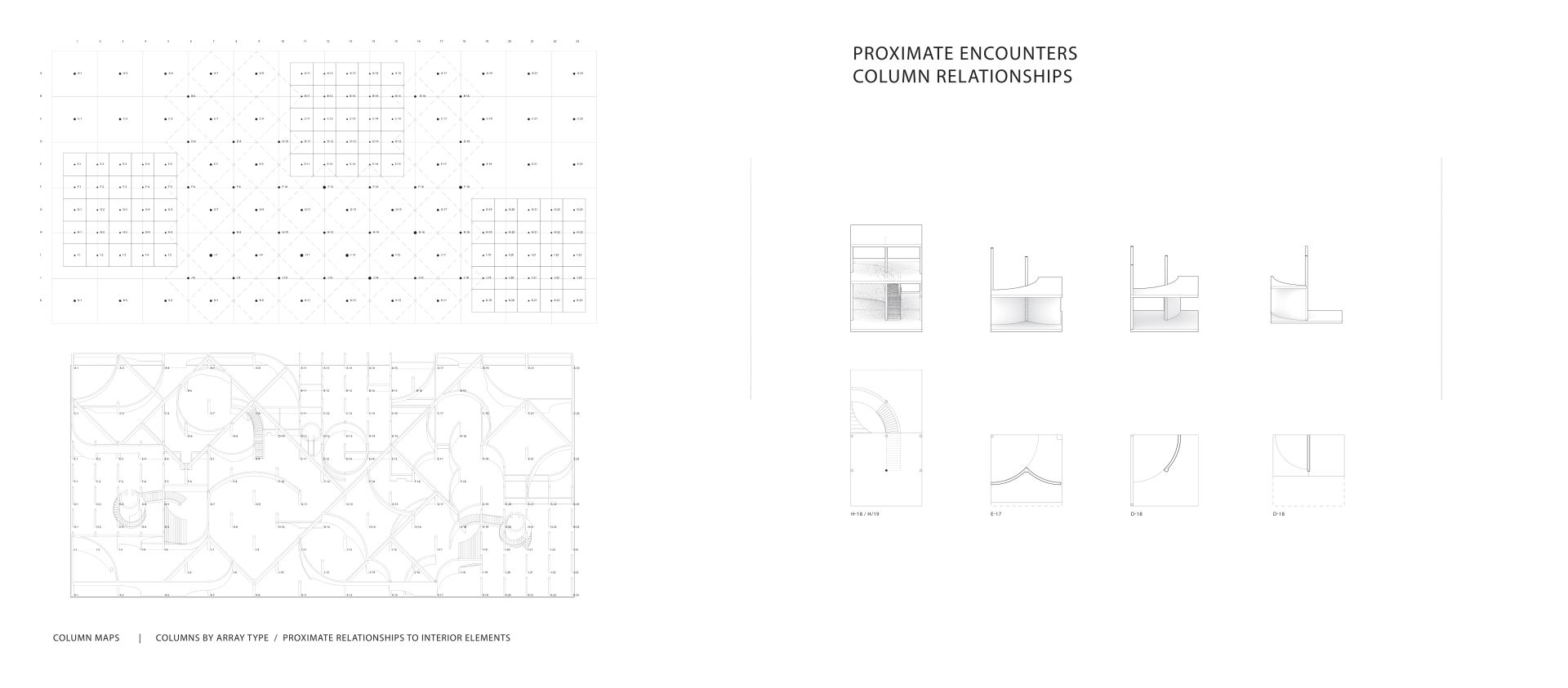Proximate Encounters
Kara MooreWith the arrival of Modernism came a renewed awareness of space and an experimentation with compositional devices that affected itsperception. Unburdened by ornament, abstracted architectural elements such as the column became a means by which an architect authorwas able to shape a distinct spatial experience. As an important structural and compositional device, the column presents itself during thishistorical period as having the capacity to oscillate between frame and figure—operating as both an entity array and an object.
For the architect Le Corbusier, the piloti became a device by which to carry out a highly scripted spatial agenda. At the Villa Savoye (1931),Le Corbusier employs the piloti to mark, direct and contain space. From the exterior of the Villa Savoye, the perception of a regular three-dimensional array is communicated as a series of columns hold up a hovering volume and are expressed in elevation. A closer inspection ofthe plan, however, reveals that out of a total of twenty-five “would-be” columns, (a 5 x 5 grid), only two interior columns mark the originalthree-dimensional array.Within the building interior Le Corbusier intentionally distorts the structural grid moving or adding columns with the ambition to directindividuals through a highly scripted promenade architectural.
Though the structural grid does not pre-determine specific places in plan it does aid in the identification of spaces at the Villa Savoye. Thisis made evident in instances where Le Corbusier moves columns off-grid by way of, for example, defining a space occupied by the centralramp or in an another example, a column picks up the corner of a stair or two columns frame the main entrance. Le Corbusier also reassertsthe figural qualities of the column when he detaches columns from the wall in the master bedroom and bathroom, and again at ground levelwhere two columns foreground the main entrance against the arc of a swerving glass wall.
The column, thus, at the Villa Savoye is presented both as a highly abstract structural entity in service of a spatial array, and as an objectwith distinct figural qualities made evident by the way it negotiates locally specific contexts. Le Corbusier calls attention to the columnthrough its placement—at the Villa Savoye the column might be described as presenting itself as set apart, proximate, fused or absorbed inrelation to other interior elements.









